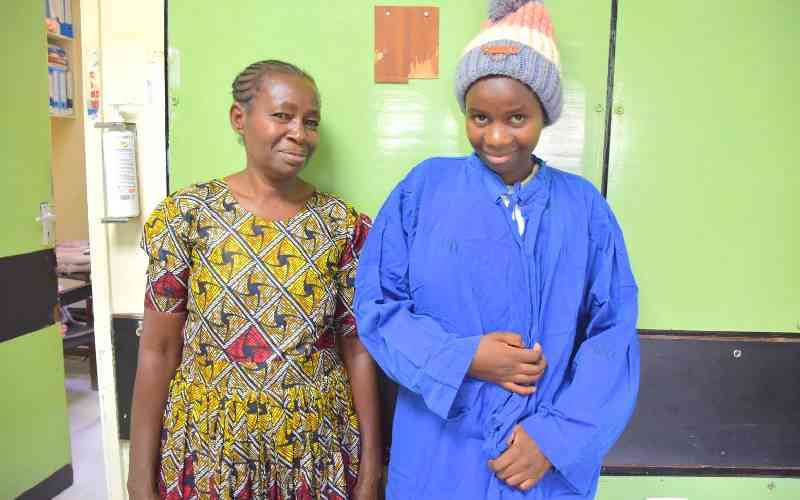
Despite growing openness around sexual health, many still underestimate the threat of Sexually Transmitted Infections (STIs). While unplanned pregnancy is often the bigger worry, infections like gonorrhoea and chlamydia silently creep through communities, often without symptoms. Left untreated, they can affect fertility, cause lifelong complications or become harder to treat.
According to Dr Keagan Kirugo, a urologist, the most common STIs he treats are gonorrhoea and chlamydia. “They are prevalent because of seeing multiple sexual partners without protection,” he says. Many people still engage in unprotected sex out of trust, misinformation or indifference.
While they’re not fun, STIs are a fact of life. Fear, shame and stigma often lead people to believe they’re “dirty” or irresponsible if they contract one. But STIs happen, and they’re common.
The World Health Organization (WHO) estimates that more than a million curable STIs are contracted every day. That includes infections like chlamydia, gonorrhoea, trichomoniasis and syphilis. While practising safer sex is important, no sex is ever completely risk free.
A 2025 study from the Maneno Yetu project by Kenya Medical Research Institute (KEMRI) found that nearly 10 per cent of adolescents in Kisumu’s informal settlements tested positive for gonorrhoea or chlamydia.
Girls were twice as likely as boys to be infected. Worryingly, two-thirds of those infected showed no symptoms, meaning they would have been missed under Kenya’s symptom-based (syndromic) diagnosis approach.
“This silent nature is dangerous,” Kirugo explains. “For instance, gonorrhoea or chlamydia can manifest in women as blocked fallopian tubes, but one will not know until later when desiring fertility.”
- Not just a sex issue: Triggers of urinary tract infections
- When family planning fails: Bungoma woman's IUD pregnancy sparks call for awareness
- Study shows only 14 per cent of disabled women use contraceptives
- Experts: Half of STI cases in Kenya go unnoticed, untreated
Keep Reading
Another KEMRI study in Thika followed adolescent girls aged 16 to 20 for five years. Nearly three-quarters of sexually active participants contracted an STI, many within just one year of becoming sexually active.
Among high-risk groups like men who have sex with men (MSM), STI prevalence remains high. About 12.8 per cent tested positive for urethral infections and more than half of anorectal infections went unnoticed due to lack of symptoms.
Many assume they’ll ‘know’ if they’ve caught something, but most STIs, especially viral ones like herpes, Human Papillomavirus (HPV) and Human Immunodeficiency Virus (HIV), can lie dormant or show only mild symptoms. This makes regular testing essential, even without symptoms. Having unprotected sex even once with someone infected puts your STI risk at around 30 per cent.
It’s important to know what STIs exist, what symptoms to watch for, and how to seek help. Despite being common, misinformation remains widespread.
“One common myth is that STIs are an outdated thing,” says Kirugo. Some believe that infections like syphilis or gonorrhoea were dealt with long ago, yet they remain widespread. In fact, there are newer threats like antibiotic resistance, especially in gonorrhoea. “While resistant strains have been short-lived, the risk is real,” he warns, pointing to indiscriminate antibiotic use as a key concern.
Unlike bacterial infections, viral STIs cannot be cured and can only be managed. “Since they are viruses, they can only be managed,” Kirugo explains. This includes herpes and HIV, where medication helps reduce symptoms and lower the chance of transmission.
Early diagnosis makes a difference. “The antivirals are very effective, especially when diagnosed early,” he adds. Vaccines, such as those for HPV and hepatitis B, also play a major role in prevention.
Another common myth is that you can catch STIs from toilet seats or door handles. “That’s just a myth,” Kirugo notes. While good hygiene is important, STIs are primarily transmitted through unprotected sexual contact.
If you notice symptoms or suspect exposure, do not delay testing. Visit a sexual health clinic or healthcare provider for support. If you test positive, get treated and notify past or future partners so they can be tested too.
Lifestyle also plays a major role. “Low immunity, unprotected sex and multiple partners raise your risk,” says Kirugo. A strong immune system may help clear less aggressive strains, but not all infections behave the same. “Waiting it out is a dangerous gamble.”
There is encouraging progress. With PCR (polymerase chain reaction) technology, a simple urine test can detect multiple STIs. “We are detecting infections using DNA,” Kirugo says. Treatment has also improved. “We’ve moved from 10-day regimens to single-day doses for some infections.”
Still, the Maneno Yetu study warns that Kenya’s reliance on syndromic diagnosis misses many infections. Expanding lab-based testing, especially among adolescents and underserved groups, is vital to address the STI burden.
The message is clear. If you’re sexually active, test regularly, even if you feel fine. Many STIs are treatable, and early diagnosis protects both your health and your partner’s.
Protection is not just about avoiding pregnancy. It is about safeguarding your long-term health.
 The Standard Group Plc is a multi-media organization with investments in media
platforms spanning newspaper print
operations, television, radio broadcasting, digital and online services. The
Standard Group is recognized as a
leading multi-media house in Kenya with a key influence in matters of national
and international interest.
The Standard Group Plc is a multi-media organization with investments in media
platforms spanning newspaper print
operations, television, radio broadcasting, digital and online services. The
Standard Group is recognized as a
leading multi-media house in Kenya with a key influence in matters of national
and international interest.











